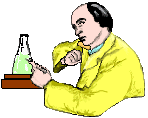![]()
ANT 211
Fundamentals of Forensic Anthropology
Role of the Forensic Anthropologist in the Forensic Sciences
(page 3 of 7)
I. Search and Recovery of Remains
A. The system: Who is involved
2. Law Enforcement Officials and Investigators: These people are involved in the investigation surrounding death or missing persons, as well as the search and recovery process. Places of employment for these people include:
police departments
sheriff's departments
state and or county offices housing Medico-legal Death Investigators: this position exists in some states and coutnies, and these individuals serve as the liason between the medical and legal community (i.e. the physicians and scientists with the attorneys and police)
investigators employed at state bureaus of investigation (i.e. SBI, State Bureau of Investigation here in North Carolina)
Law enforcement officials and investigators are primarily involved in the search and recovery phase of a case, not in the analysis phase. Conversely, medical examiners and forensic anthropologists are heavily involved in analyzing decedents (pronounced dee-see-dents, people who have died).
Law enforcement officials and investigators gain most of their training on the job, but may gain additional knowledge by attending workshops, seminars, or by taking a course such as this one.
The types of information learned at workshops, seminars, or courses such as this one begin with learning (1) to recognize human versus non-human bone (not a simple task, and one that should be confirmed by the forensic anthropologist when bones are found), and (2) how to handle crime scenes and human remains.
3. Forensic Anthropologists: Forensic anthropologists may conduct or assist in the search and recovery of human remains. The services and expertise of the forensic anthropologist are usually requested by the medical examiner or coroner, or by a law enforcement agency, depending on the county and state.

4. Other specialists: Some additional experts may assist in the processing of remains at a death scene, and may collect associated materials (physical evidence) for analysis. These experts include, but are not limited to:
| a) forensic entomologists
|
who gather insects (mainly maggots and beetles) from a body or scene for use in estimating time since death. They may also determine if a body has been moved from one location to another. Data collected include weather information, ground and air temperatures, seasonal changes, etc. for use with the insects they study from the body. |
| b) forensic botanists | who gather plant materials, seeds, pods, roots, etc. from a body or scene for use in estimating time since death. For example, if root growth is found around bones or a body is decomposing on top of leaves that have fallen, it may be possible to provide a fairly narrow estimation of how long ago a body died. Observations and analyses of soil, plants, leaves, and the microenvironment of the body and death scene may produce helpful information. |
